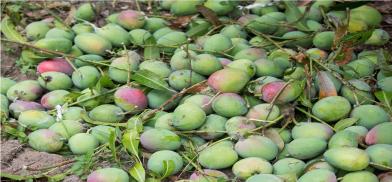India’s first Mango Heritage Village comes up in Kerala
The journey to conserve these local fruit variants began almost six years ago with Shyju Mechathi, a civil police officer by profession, who along with his neighbours started documenting and marking every tree in each house with signboards based on their variants.

Chunda Kuruvakkavu, a small village in the Kannur district of the southern Indian state of Kerala, was declared a Mango Heritage Village, the first for any village in the state, by the state government. It’s also the first in India, known as the land of mangoes, and which grows some 1500 varieties of the “king of fruits”.
Twenty families in the village are conserving over 102 local varieties of mango in their family compound.
These indigenous mangoes, called nattumavu in Malayalam, the language of the Kerala, have many distinct features, including some smelling like pineapple. Unnikrishnan Namboodiri, one of the residents of the heritage village, alone has over 30 varieties of these trees in his plot.
The journey to conserve these local fruit variants began almost six years ago with Shyju Mechathi, a civil police officer by profession, who along with his neighbours started documenting and marking every tree in each house with signboards based on their variants.
“We have documented these 20 houses thoroughly. The other houses also have local mango varieties,” the 42-year-old police officer, was quoted as saying by The Civil Society Online. The group started locating all these varieties and disseminating them to interested groups.
A book, he compiled, contained over 150 mango varieties, detailing their special features like colour, fibre, taste, and bearing habits.
Their work got a scientific push and recognition in 2017. Dr Joseph John, then principal scientist of the National Bureau of Plant Genetic Resources (NBPGR) in the Thrissur district, participated that year in one of the exhibitions that the group started organizing to showcase their work.
Later a team of the NBPGR identified and recognised the 100 varieties they had compiled. “Dr John’s participation was the turning point,” says Machathi, said.
This year on May 2, the village organized an exhibition—after a gap of two years because of the pandemic—and showcased 170 varieties. These exhibitions have become important avenues for interaction between scientists and farmers. However, for scientists, naming these varients remain challenging.
“The problem for us in conserving mango varieties is that the same variety has different names in different areas,” says Dr Suma A., a scientist at NBPGR. However, the problem can be resolved through proper documentation, identification and awareness about the indigenous mango conservation.
(SAM)








Post a Comment